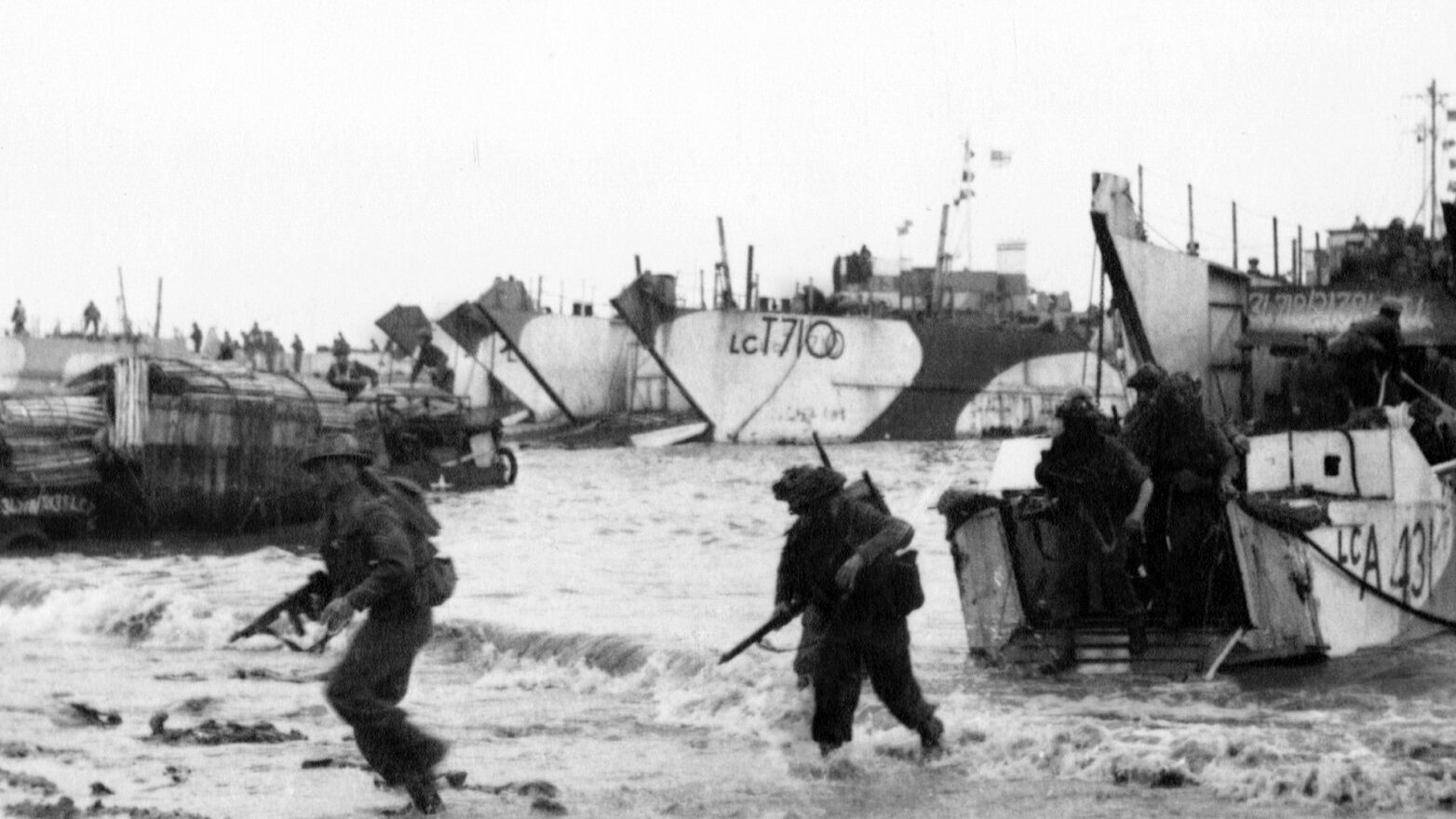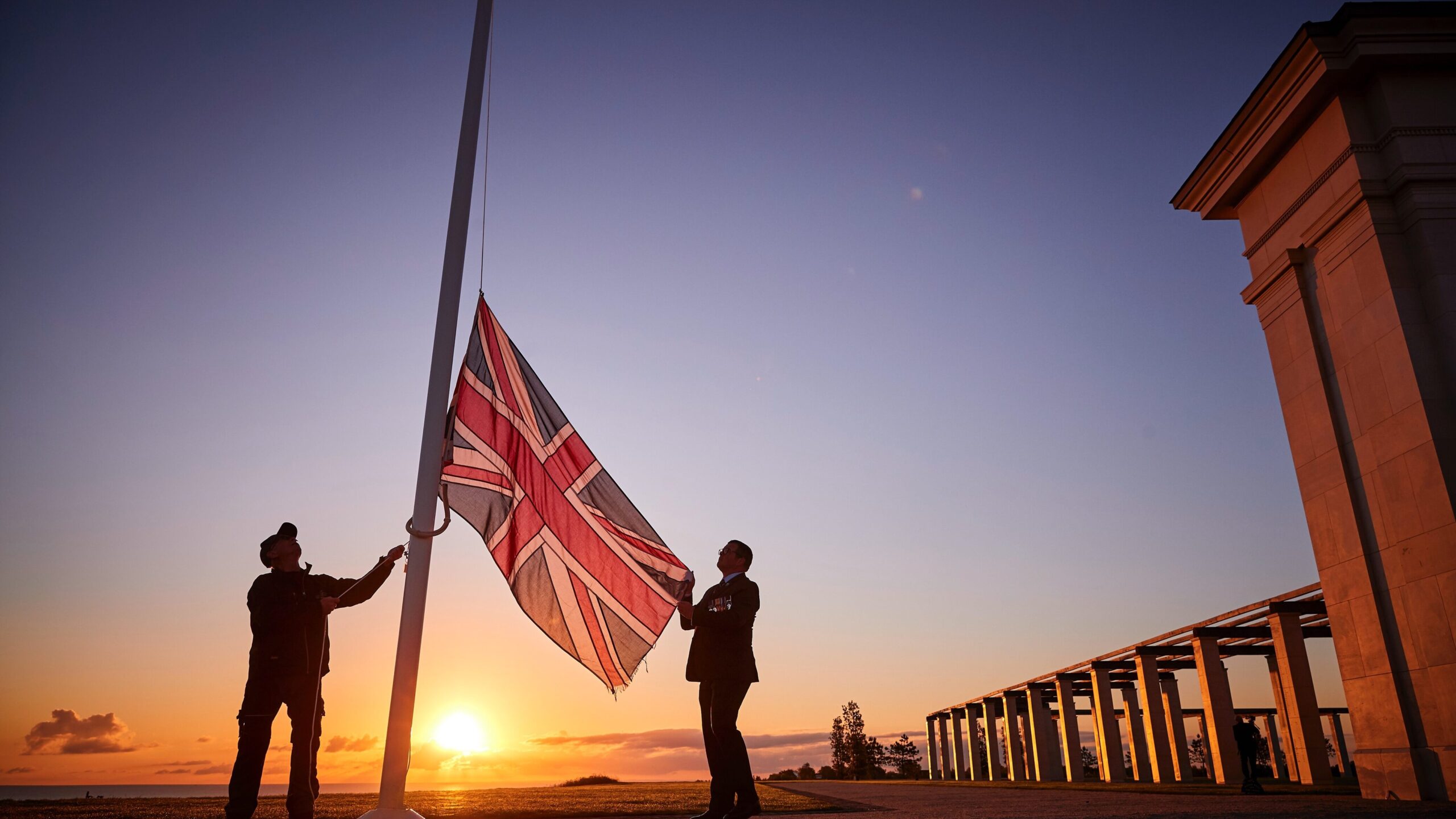Discover D-Day
What was D-Day?
D-Day was the successful allied invasion of the beaches of Normandy on 6 June 1944. Codenamed Operation Neptune, the Normandy landings made up the largest seaborne invasion in history and played a crucial role in liberating Western Europe from Nazi occupation.
On 5 and 6 June 2024, the UK will commemorate the 80th anniversary of D-Day with a series of major commemorations and events across the UK and in France to honour the brave soldiers who risked their lives for freedom and peace.

Unprecedented scale
D-Day was of unprecedented scale. The allied forces’ staggering operation involved the coordinated efforts of more than 155,000 troops supported by 11,500 aircraft, and 6,900 naval vessels in an assault on five Normandy beachheads: Utah, Omaha, Gold, Juno, and Sword. Integral to its success were years of planning, intelligence gathering, and deception campaigns, as well as the courage of the thousands of brave men that stormed the beaches that day.

International collaboration
International collaboration was crucial to the allied victory. While most of the personnel that landed in Normandy on D-Day were from the UK, the United States, and Canada, a significant number from Australia, Belgium, Czechoslovakia, Denmark, France, Greece, the Netherlands, New Zealand, Norway, and Poland also took part in the Normandy Campaign.

Military innovation
Military innovation was another important factor contributing to the success of the assault. Among the long list of inventions created for or used for the first time on D-Day were a tide-prediction machine that identified the best time and date for the invasion, two artificial harbours (the Mulberry Harbours) created by sinking outdated ships and large concrete structures that helped the allies to efficiently unload cargo, and pipelines under the ocean (PLUTO) that supplied petrol from Britain to Europe to fuel the Normandy campaign.
A turning point in the Second World War
D-Day altered the course of history, signalling the beginning of the end for Nazi Germany. Allied forces shattered Hitler’s Atlantic Wall, opening another major front, and affording them a crucial foothold in Western Europe. The Normandy Campaign featured intense and gruelling battles to liberate key cities like Caen. The establishment of a secure front in Normandy was crucial for allied forces to launch further offensives, leading to the liberation of Paris, the push towards Germany, and, ultimately, to victory.

Why we remember
In commemorating the 80th anniversary of D-Day, we pay homage to the resilience and fortitude of the British veterans who played a crucial role in this pivotal moment of the Second World War. The invasion claimed the lives of thousands of allied soldiers. These brave men—many just teenagers—left their families and their futures behind to liberate Western Europe from the grip of the Nazis. We must remember the sacrifices they made.